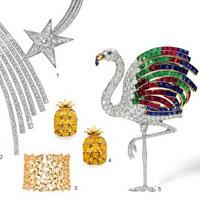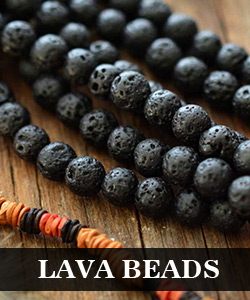- Comments (0)
- Sep 12, 2013
How to Choose Wire for Jewelry Making
Summary: Wires are necessary components when making jewelry, but do you know how to choose wire for jewelry making? Here we will tell you the tips of choosing the best wire.
There are many things you need to consider when choosing wire for jewelry making. For different jewelry projects, you need to choose different types of wire according to different types and sizes of materials. Once you get the hang of choosing wire, the creative ideas are endless. It can be hard to know what the best wire is to complete a jewelry making project. The different diameters of wire, different metals, and terms such as 'full hard' and 'dead soft' may confuse you. Hope this page may help you.
.jpg)
About wire thickness:
- Wire is measured in gauges. In jewelry making, 14ga (very thick) to 30ga (very thin) is common to be used. The thickness for choosing depends on the style and design. Some jewelry makers prefer thicker wires to make chunky jewelry or ethnic looking ones.
About wire hardness:
- Full hard: The hardest and stiffest temper appropriate for making sturdy jewelry. It’s very difficult to maleate, especially in heavy gauge wires.
- Half-hard: One of the most common temper used in jewelry making, especially used for wrapping non-drilled stones or binding wires together.
- Soft or dead-soft: This is the softest temper used by jewelry makers. Thin wires in soft hardness can be used with various techniques, such as stitching, coiling and weaving. You can make beautiful ear wires with maintaining their shape.
About types of wire:
- Tiger tail wire: A very common type of wire in jewelry making. It is made out of braided stainless steel wire that is coated in colorful nylon. It is very strong and thin which may not suitable for wire wrapping, but it can be used to make invisible effect.
- Copper and aluminum wire: Copper wire only comes in gold and silver colors and is coated with enamel which is inexpensive and easy to manipulate. While aluminum wire is a kind of very soft wire that comes in many colors and often has the color inside the wire.
- Brass wire: Brass wire looks like copper wire, but brass wire is a mix of copper and zinc. That’s why it is sometimes hard to distinguish one from the other. Brass is a hard metal while copper is ductile.
- French wire: It is a coiled wire that comes in various materials. For accenting jewelry, it is a great alternative. The smaller the coil is, the more precious the metal is, and the more expensive it is.
- Gold wire: Gold plated wire covers a layer of 10k or higher gold over the surface. Gold filled wire has 100 times more gold than gold plate wire.
- Pure gold is 24K and it is soft for using in wire wrap jewelry.
- Silver wire: Silver plated wire is usually made from sterling silver over a copper core for good looking, but it can be easily ruined by tools. Sterling silver wire is 92.5% pure silver, for this reason it is often called 925 silver, and using 7.5% copper makes the wire harder. Fine silver wire is of course 99% pure silver.
- Memory wire: It is made from carbon steel or stainless steel that is perfect for making bangles or other looped jewelry because it can return to the loop made in factory. It cannot be used for jewelry requires wrapping.
Now do you have some knowledge of choosing wire for jewelry making? We are looking forward to seeing your greater handmade jewelry by using more appropriate wire.







